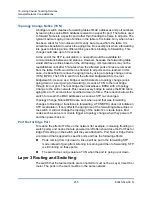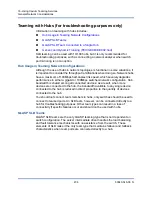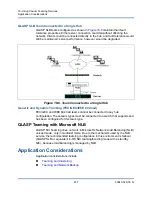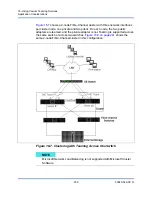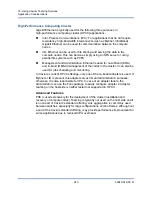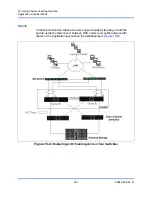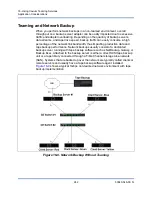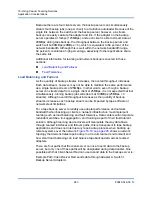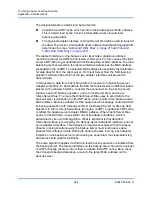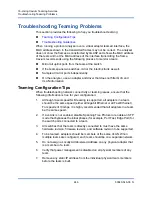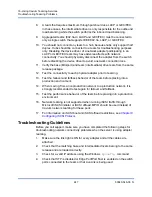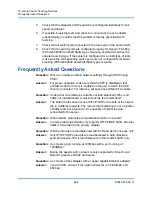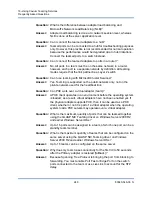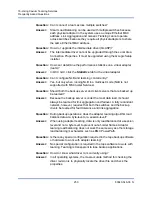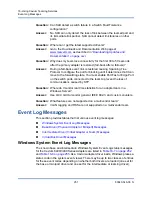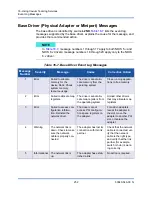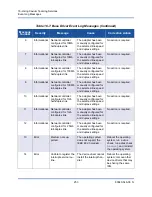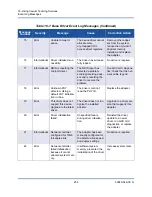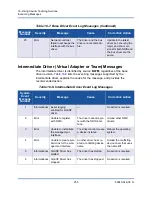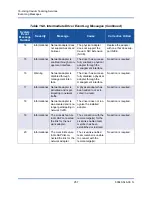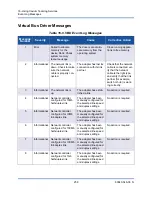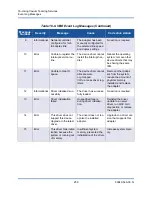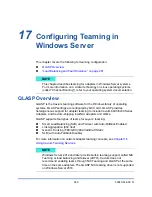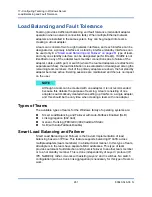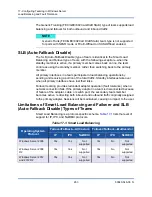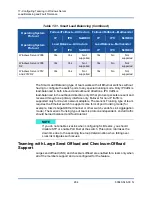
16–Using Cavium Teaming Services
Frequently Asked Questions
249
83840-546-00 N
Question:
What is the difference between adapter load balancing and
Microsoft’s Network Load Balancing (NLB)?
Answer:
Adapter load balancing is done at a network session level, whereas
NLB is done at the server application level.
Question:
Can I connect the teamed adapters to a hub?
Answer:
Teamed ports can be connected to a hub for troubleshooting purposes
only. However, this practice is not recommended for normal operation
because the performance would be degraded due to hub limitations.
Connect the teamed ports to a switch instead.
Question:
Can I connect the teamed adapters to ports in a router?
Answer:
No. All ports in a team must be on the same network; in a router,
however, each port is a separate network by definition. All teaming
modes require that the link partner be a Layer 2 switch.
Question:
Can I use teaming with Microsoft Cluster Services?
Answer:
Yes. Teaming is supported on the public network only, not on the
private network used for the heartbeat link.
Question:
Can PXE work over a virtual adapter (team)?
Answer:
A PXE client operates in an environment before the operating system
is loaded; as a result, virtual adapters have not been enabled yet. If
the physical adapter supports PXE, then it can be used as a PXE
client, whether or not it is part of a virtual adapter when the operating
system loads. PXE servers may operate over a virtual adapter.
Question:
What is the maximum quantity of ports that can be teamed together
using the QLASP NIC Teaming driver on Windows Server 2008 R2
and earlier Windows Server OSs?
Answer:
Up to 16 ports can be assigned to a team, of which one port can be a
standby team member.
Question:
What is the maximum quantity of teams that can be configured on the
same server using the QLASP NIC Teaming driver on Windows
Server 2008 R2 and earlier Windows Server OSs?
Answer:
Up to 16 teams can be configured on the same server.
Question:
Why does my team loose connectivity for the first 30 to 50 seconds
after the Primary adapter is restored (fallback)?
Answer:
Because Spanning Tree Protocol is bringing the port from blocking to
forwarding. You must enable Port Fast or Edge Port on the switch
ports connected to the team or use LiveLink to account for the STP
delay.

